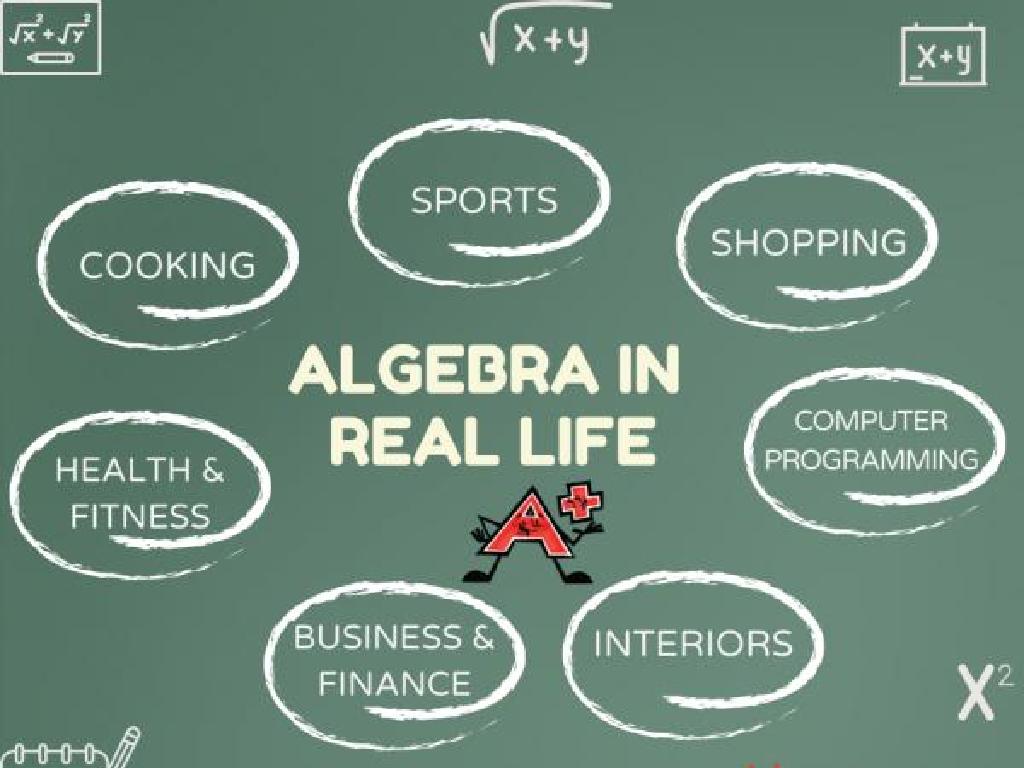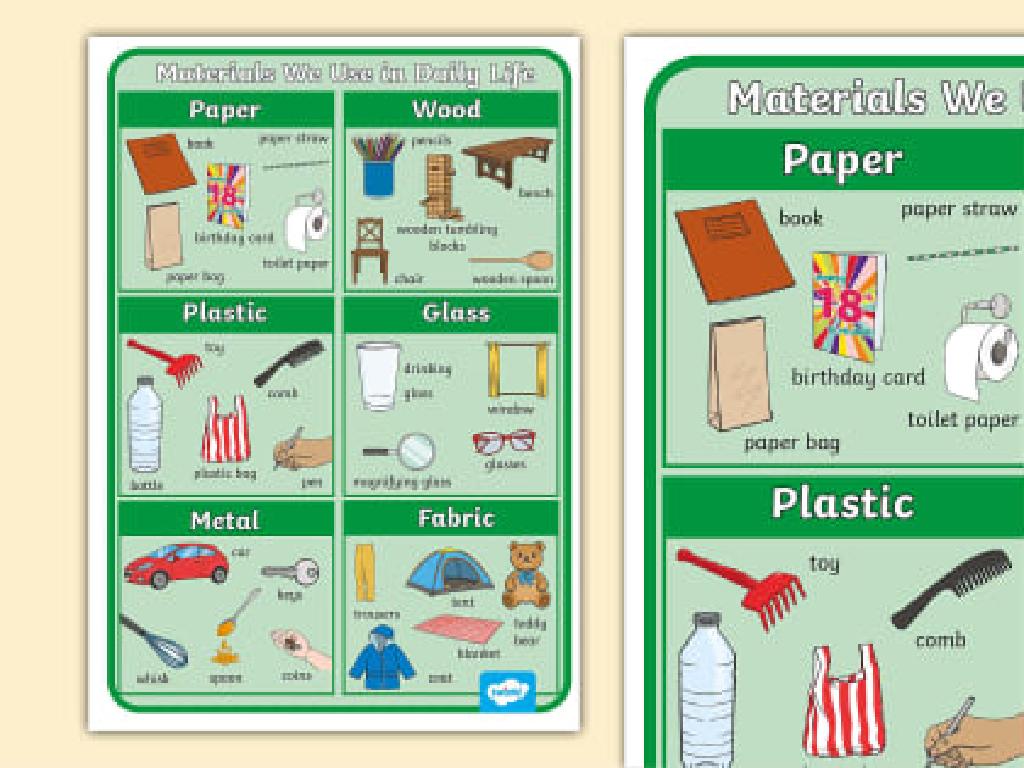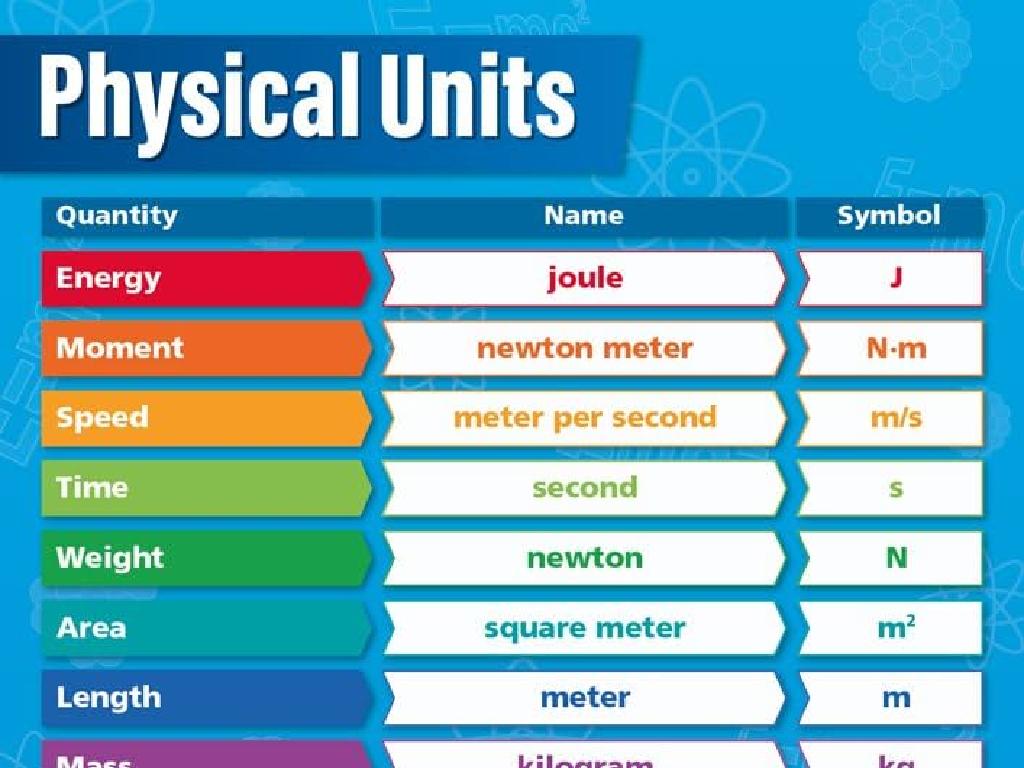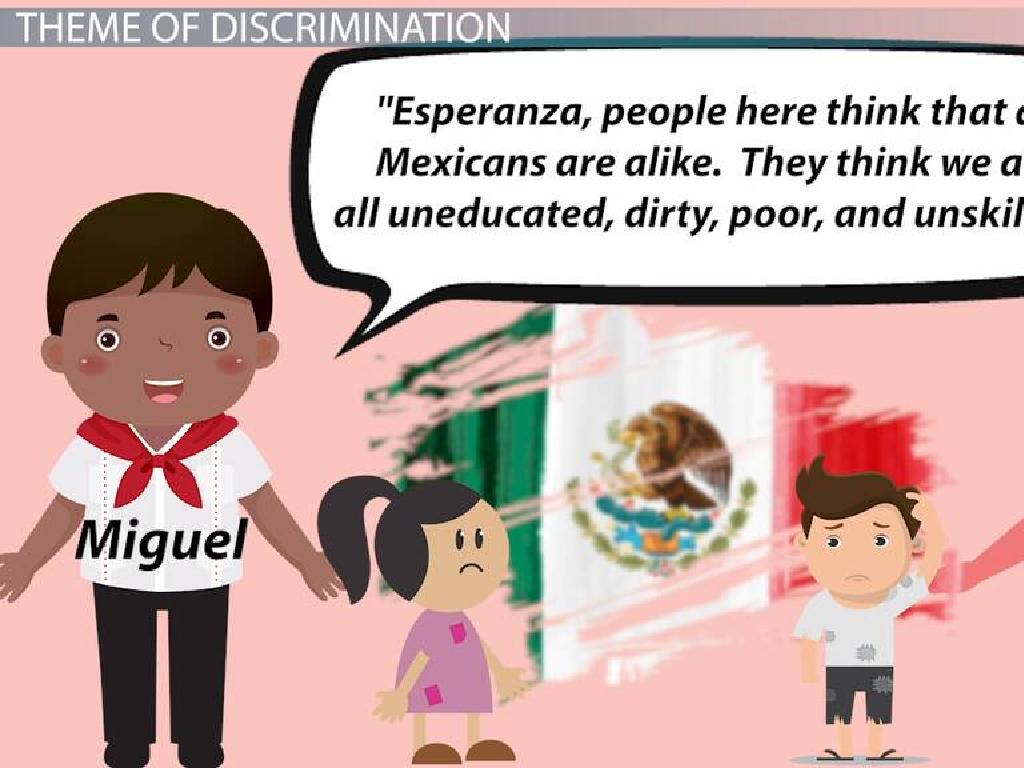Maps With Fractional Distances
Subject: Math
Grade: Sixth grade
Topic: Add And Subtract Fractions
Please LOG IN to download the presentation. Access is available to registered users only.
View More Content
Navigating Maps with Fractional Distances
– Daily life applications of fractions
– Fractions are used in cooking, time management, and more.
– Maps: Tools for navigation and distance
– Maps use fractions to represent real distances between locations.
– Adding fractions on maps
– Combine fractional distances to find total travel length.
– Subtracting fractions on maps
– Remove a part of the journey to find the remaining distance.
|
This slide introduces students to the concept of using fractions in practical situations, such as understanding distances on maps. Begin by discussing how fractions are part of everyday life, like in recipes or dividing time. Explain that maps are scaled-down representations of real places, where fractional distances can show the space between two points. Teach students how to add fractions to calculate total distances for a trip on a map. Also, demonstrate how to subtract fractions when they need to find the remaining distance after completing a part of their journey. Use map examples with fractional distances to provide a visual and practical application of the lesson.
Review of Fractions
– Understanding fractions
– Fractions represent parts of a whole
– Numerator vs. denominator
– Top number (numerator) and bottom number (denominator)
– Finding equivalent fractions
– Fractions that represent the same value
– Simplifying to simplest form
– Reducing fractions to the lowest terms
|
Begin with a quick review of fractions to ensure students recall that fractions represent parts of a whole. Clarify the roles of the numerator and denominator, with the numerator indicating how many parts are being considered and the denominator showing the total number of equal parts in the whole. Discuss equivalent fractions by showing how different fractions can express the same value and practice finding them by multiplying or dividing both the numerator and denominator by the same number. Emphasize the importance of simplifying fractions to their simplest form, which makes adding, subtracting, and comparing fractions easier. Use visual aids like pie charts or bar models to help students visualize these concepts.
Adding Fractions on Maps
– When to add fractions: combining distances
– Combine fractions when adding distances on a map, like two paths together.
– Add fractions with like denominators
– If denominators match, just add the numerators, e.g., 1/4 mi + 1/4 mi = 2/4 mi.
– Add fractions with unlike denominators
– To add fractions like 1/3 mi + 1/4 mi, find a common denominator first.
– Finding common denominators
– Common denominators are multiples of the original denominators, e.g., for 1/3 and 1/4, use 12.
|
This slide introduces the concept of adding fractions in the context of combining distances on a map, which is a practical application of the skill. Start by explaining when to add fractions, using examples of adding different paths on a map. Then, demonstrate adding fractions with like denominators, which is a simpler process. For fractions with unlike denominators, guide students through the process of finding a common denominator before adding. Use visual aids like fraction strips or a number line if possible to help students understand the concept of common denominators. Encourage students to practice with map-based examples to solidify their understanding.
Subtracting Fractions on Maps
– When to subtract fractions
– Use subtraction to find the difference between two distances on a map.
– Subtract like denominators
– If fractions have the same bottom number, just subtract the top numbers.
– Subtract unlike denominators
– Find a common denominator before subtracting the top numbers.
– Fraction subtraction applications
– Apply subtraction to calculate shorter routes or detours on maps.
|
This slide is aimed at teaching students when and how to subtract fractions, particularly in the context of maps and distances. Start by explaining scenarios where subtraction of fractions is necessary, such as finding the difference between two distances. Emphasize that when the denominators are the same, subtraction is straightforward. However, with different denominators, they must first find a common denominator. Use map examples to show practical applications, such as determining the shorter of two routes or calculating a detour’s additional distance. Encourage students to practice with map exercises and real-life scenarios to solidify their understanding.
Navigating Maps with Fractional Distances
– Understanding map scales with fractions
– Map scales might show 1/4 inch equals 1 mile
– Plotting routes using fractional distances
– Mark points A to B and measure with the scale
– Adding distances for total route length
– If A to B is 3/4 mi and B to C is 1 1/2 mi, total is 2 1/4 mi
– Subtracting to find the difference between routes
– To find a shorter route, subtract the longer route by the alternative path
|
This slide introduces students to the concept of reading maps with fractional distances, an important skill for real-world navigation. Begin by explaining how map scales work with fractions, then demonstrate how to plot a route on a map using these scales. Show how to add fractional distances together to calculate the total distance of a route, and how to subtract one route from another to find the difference in distance. Use clear examples to illustrate these concepts, ensuring that students understand how to manipulate fractions in a practical context. Encourage students to practice with different routes and scales.
Class Activity: Map Quest
– Receive a map with landmarks
– Plot a route on the map
– Calculate total distance traveled
– Add/subtract fractional distances between landmarks
– Share routes and distances
|
In this engaging class activity, students will apply their knowledge of adding and subtracting fractions to real-world scenarios using a map. Provide each student with a map that includes various landmarks and fractional distances between them. Students will choose their own route connecting multiple landmarks and then calculate the total distance traveled by adding or subtracting the fractional distances. After calculations, students will present their chosen routes and explain their mathematical process to the class. This activity not only reinforces fraction operations but also enhances students’ spatial awareness and presentation skills. Possible variations include having students work in pairs, setting a maximum number of landmarks to visit, or challenging them to find the shortest possible route.
Conclusion: Maps & Fractions
– Recap: Adding & subtracting fractions
– Accuracy is key in calculations
Precise calculations ensure correct navigation
– Homework: Design a map with fractions
Include fractional distances between landmarks
– Create questions for a classmate
Questions should involve finding total distances or differences
|
As we wrap up today’s lesson on adding and subtracting fractions on maps, it’s crucial to emphasize the importance of accuracy in these calculations, as they can affect navigation and distance measurements. For homework, students are tasked with creating their own map, incorporating fractional distances between various landmarks. They should also come up with a set of questions related to their map for a classmate to solve. This activity will reinforce their understanding of the concepts and allow them to apply their knowledge in a practical and creative way. Encourage students to be imaginative with their maps and to ensure their questions are clear and solvable.





